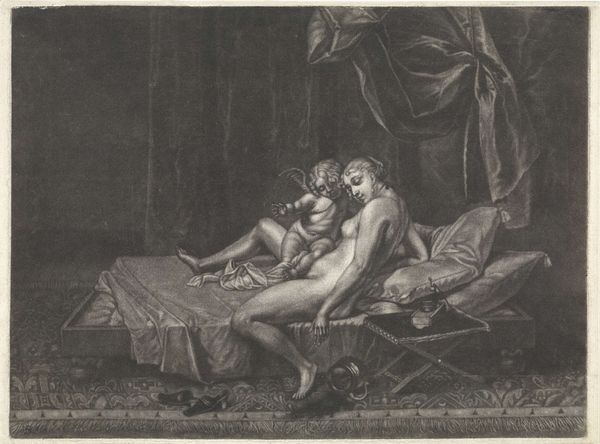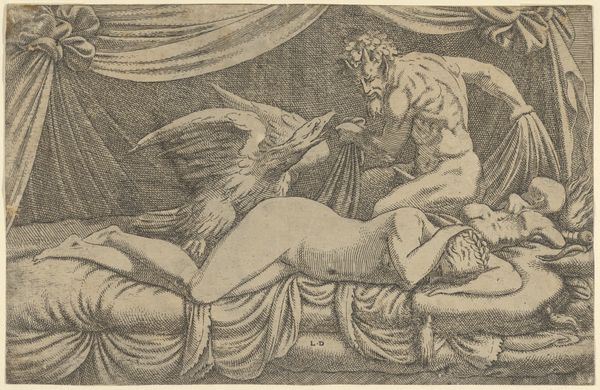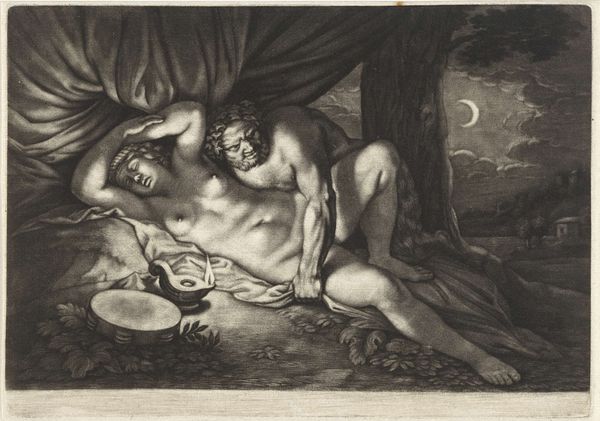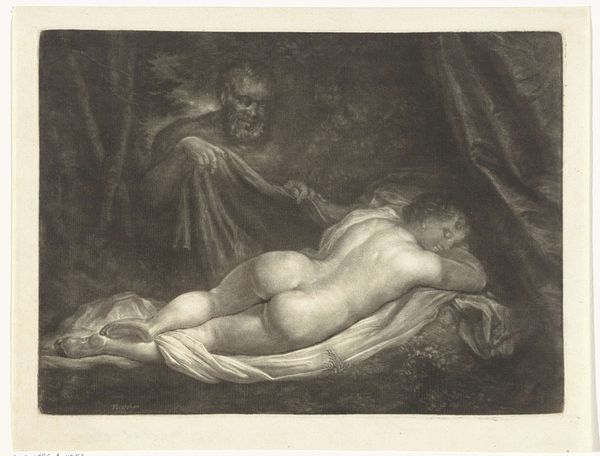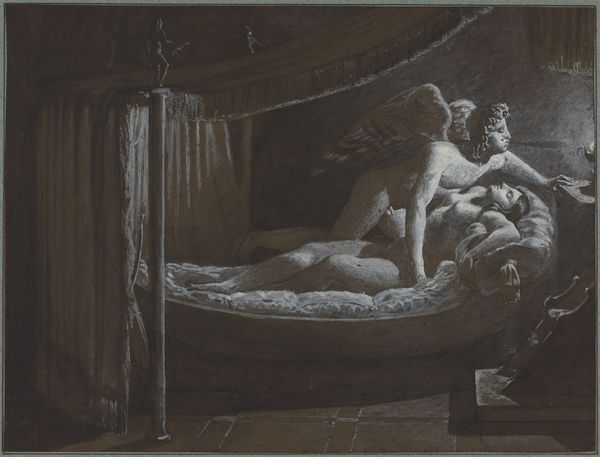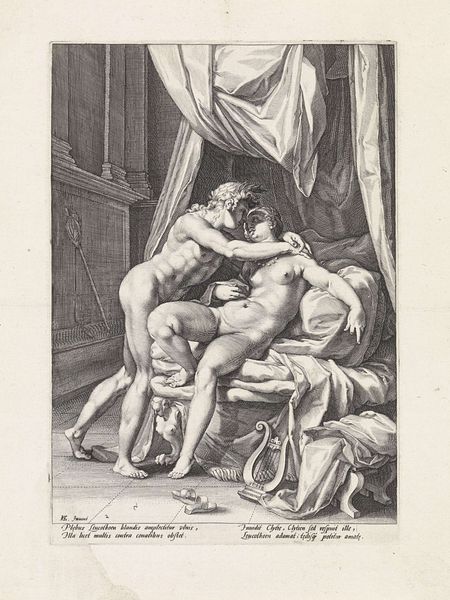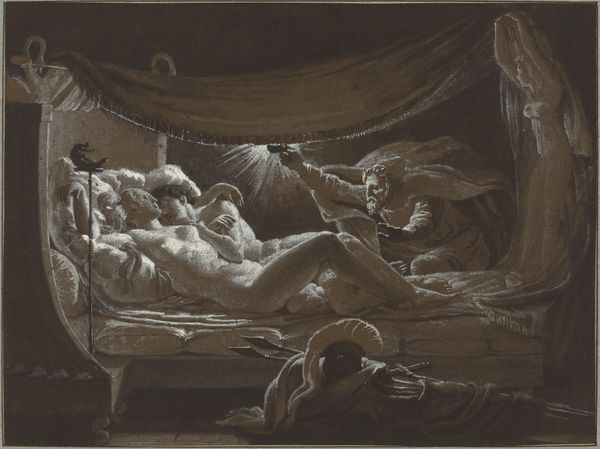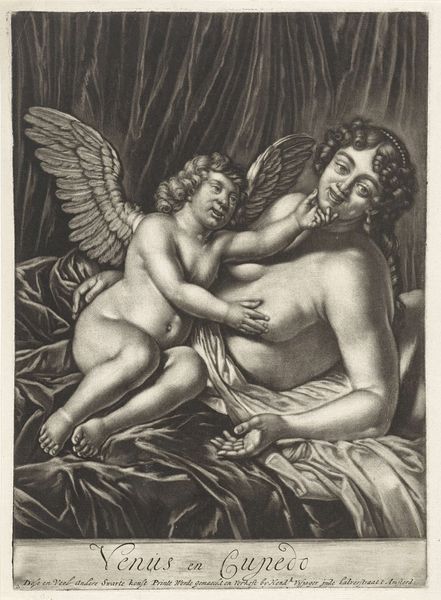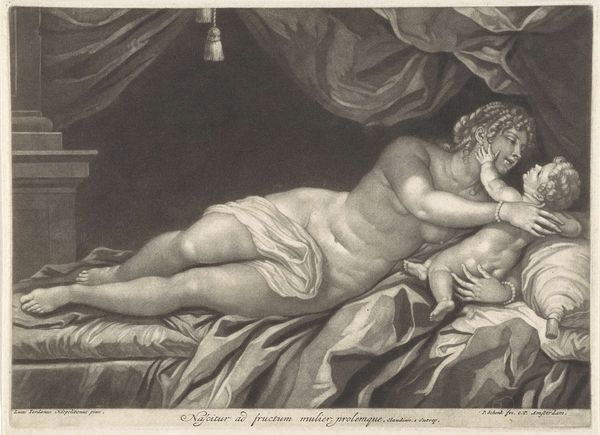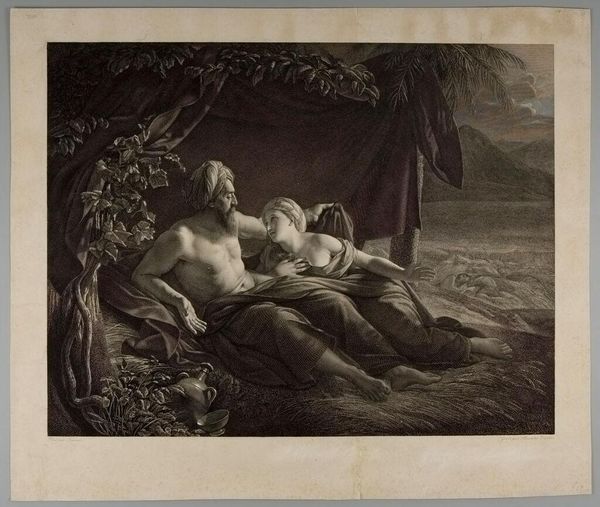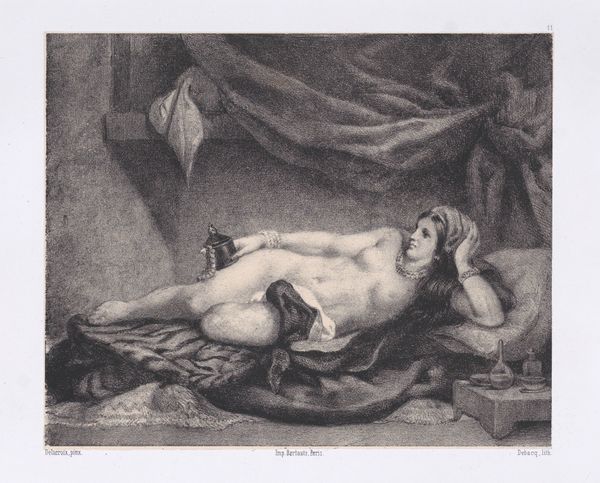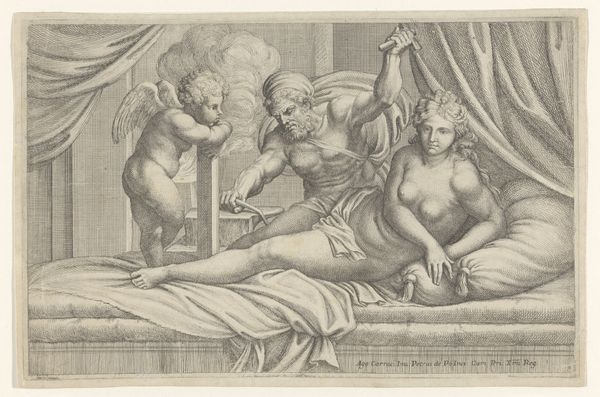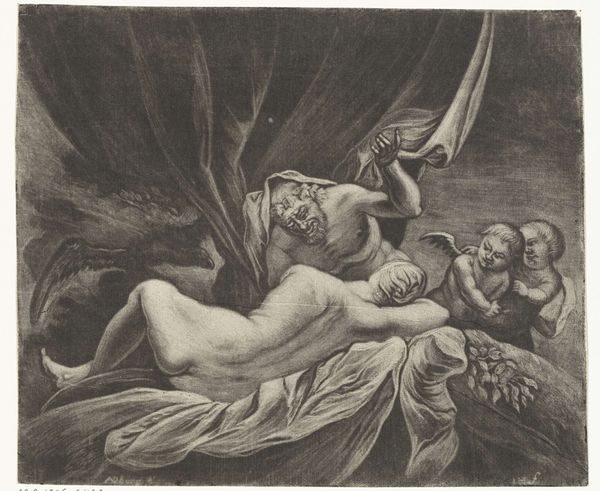
engraving
#
allegory
#
baroque
#
portrait reference
#
black and white
#
nude
#
engraving
Dimensions: height 187 mm, width 245 mm
Copyright: Rijks Museum: Open Domain
Curator: Look at this intimate scene: Pieter Schenk's engraving, "Cupido en Psyche," created between 1670 and 1713. The print is currently housed right here at the Rijksmuseum. Editor: My first impression is one of dreamlike repose, almost melancholy. The grayscale palette gives it this hushed, secretive feeling, like we’ve stumbled upon a private moment. She’s absolutely out, and Cupid looks… watchful. Curator: It’s a visual distillation of the classical myth. The engraving freezes the charged moment where Cupid betrays his mother Venus' orders. Overcome with desire, he’s succumbed to his love for Psyche. Note how Schenk positions the figures to maximize symbolic potential. Editor: I notice how carefully Schenk models their forms in monochrome. The chiaroscuro—it’s all so velvety. There’s this tangible sense of weight to the drapery. I also adore the rather suggestive furniture. It has claw-like decorations under the bed, giving me slightly uneasy vibes… Curator: Right, it echoes how earthly love, even at its most sublime, often clashes with higher ideals. See how Psyche reclines? A posture symbolizing vulnerability, dependence. Also, there's much dialogue throughout the history of images involving sleep, particularly a loss of vigilance opening oneself to vulnerability. The "sleeping Venus," for example, becomes a symbolic precursor. Editor: The black-and-white intensifies that drama! And that Cupid perched behind her head looks a bit demonic too, in shadow. Not the chubby cherub we typically think of! You know, it brings to mind all those troubling fairytales where beauty rests at the mercy of some hidden beast… What's the fairytale being referenced here, or is this image merely about 'betrayal of orders'? Curator: "Cupid and Psyche" tells a full and complete story in Apuleius’ *Metamorphoses*, later becoming the foundation for much Western European art regarding romantic trials. Editor: Ah, now I get it! It's almost a theatrical snapshot, complete with that rich allegorical staging! It’s remarkable to condense all those layers into a single frame! Thank you! Curator: Absolutely. What resonates most is how visual narratives build emotional continuity across vast stretches of time. The piece is far more nuanced, once we begin looking at the symbols on show.
Comments
No comments
Be the first to comment and join the conversation on the ultimate creative platform.
